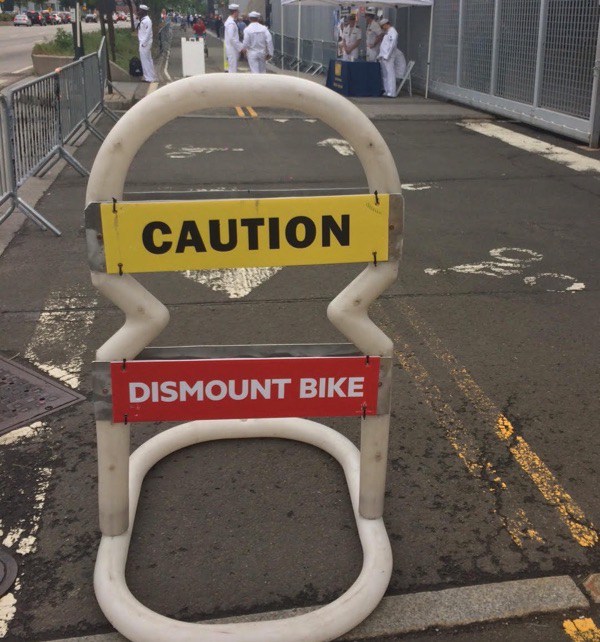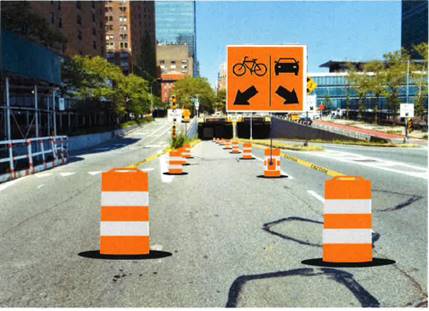This year, however, the city maintained bike access on both avenues — by far the most important and heavily used East Side bicycle routes. It routed cyclists through a protected bike lane it created in the left tube of the First Avenue tunnel from 40th to 49th streets, and made another temporary bike lane for cyclists heading downtown on Second Avenue between 57th Street and 41st streets. It worked great: Thrilled bike commuters thanked city agencies.
The routing plan was an acknowledgement that a major disruption of the growing city bike network requires working detours and operational attention — not a shut-down.
The significance of the change goes well beyond two avenues during a week in September. It’s a sign that city government is moving away from its practice of establishing bike lanes and then ignoring them — and that the Department of Transportation's capacity to operate and maintain the bike network is growing as the agency expands the network under Mayor de Blasio’s Green Wave and the City Council's Street Master Plan.
Given the success of the GA experience, Bike New York requested — and DOT staffers appear receptive — to the creation of a similar detour for cyclists during another big city event, Fleet Week in May. The longtime policy of police and Hudson River Park Trust has been to close the West Side Greenway bike path during the annual visit by U.S. Navy ships — without offering an alternate bike route — in order to accommodate the pedestrian throngs on the piers. Cyclists have been forced to walk their bikes, with some ending up in highway-like traffic on 12th Avenue. We look forward to seeing plans for a safe re-routing.

Such operational attention should go further.
The organized cycling community mostly interacts with DOT’s planners and street designers, but the agency focuses primarily on operations and maintenance — fixing potholes, resurfacing streets, keeping traffic signals functioning, repairing and upgrading sidewalks, maintaining bridges and monitoring vehicle crashes, construction sites, utility companies and special events. DOT must build and integrate bike-network operation and maintenance into these old-school parts of the department.
The Green Wave, released in July, promises greater efforts, but they are just a beginning.
This spring, Bike New York and others called on DOT’s resurfacing unit to acknowledge protected bike lanes when it removes street markings by ensuring a protected right-of-way for bike riders during resurfacing. DOT made some stabs in this direction with traffic barrels and spray-painted lane labels — but it needs a more robust and consistent approach.
DOT also needs a dedicated inspection and enforcement team to patrol construction sites. New legislation and DOT rules about maintenance of bikeways during street-adjacent construction look great on paper, and some sites have heeded them. But without such an agency team, construction crews will continue to block lanes. The Green Wave raises the possibility of a team of bike-mounted inspectors, but DOT's commitment to the notion remains unclear. An inspection team also could spot and inventory faded bike network markings, potholes, and other problems. DOT’s current complaint-driven process is not a fair or efficient way to track and remedy such issues, which only will grow as the bike network expands.
The GA and proposed Fleet Week detours should herald much more notification to cyclists of bad or changed route conditions. Bike riders using the Bleecker Street bike lane faced a minefield of steel plates this summer. Construction on Leonard Street near the Brooklyn-Queens Expressway had devastated the roadway for months. Ongoing water-main repairs necessitate an alternate southbound bike route between Greenpoint and Bushwick. DOT issues dozens of street closure and detour notices for motorists every week; the agency must start thinking about other street users as part of this routine.
Detours, potholes and bike-lanes maintenance are not as fun or exciting as ribbon-cuttings for new bike lanes — but are critically important for boosting bike use and making it safer.






